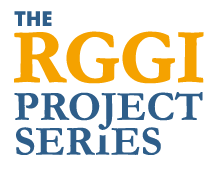2015-2017 REPORT
The Economic Impacts of the Regional Greenhouse Gas Initiative on Nine Northeast and Mid-Atlantic States
BY Analysis Group | April 2018
Rigorous research based on historical data, this report, the third in-depth comprehensive analysis on RGGI’s economic performance, finds – once again – a consistent trend of positive net economic value. The Analysis Group, an independent expert research group, tracks the most recent three-year compliance period, and examines the empirical economic data.
The AG team including Paul Hibbard, Susan Tierney, Pavel Darling and Sarah Cullinan estimated that RGGI states realize $1.4 billion in net economic value from RGGI’s implementation during the 2015-2017 period.
KEY FINDINGS:
The RGGI region gained $1.4 billion in net economic value – or $34 in value added per capita – from the program’s implementation during the 2015-2017 period. Consumers and the broader economy benefited from states spending RGGI auction proceeds on energy-efficiency measures, community-based renewable power projects, credits on customers’ bills, bill-paying assistance for low-income ratepayers, greenhouse gas reduction measures, education and job training programs, and other programs.
RGGI boosted employment across the region and in each state, supporting over 14,500 new job-years. Job-years related to RGGI activities include performing efficiency audits, selling products related to energy efficiency and renewable energy, installing energy-efficient appliances and systems, training people on conservation, and working on other energy issues. This increase in employment comes on top of the nearly 14,200 job-years created from RGGI’s implementation over the years 2012-2014, and more than 16,000 job-years RGGI created from implementation during 2009-2011.
RGGI helped to lower the total amount of dollars member states send outside their region in the form of payments for fossil fuels by over $1 billion (over the three-year period). RGGI lowered states’ total fossil-fired power production and their consumers’ use of natural gas and oil for heating.
Energy consumers overall – households, businesses, government users, and others – enjoyed a net gain of over $220 million, as their overall energy bills dropped over time. Local reinvestment of RGGI dollars in energy efficiency and renewable energy programs tends to offset the impact of increased wholesale electricity prices resulting from the cost of RGGI allowances. Consumers experiencing energy savings tend to invest those extra dollars back into the local economy, serving to further boost local and regional economies.
The economic benefits of the RGGI program remained comparable despite higher CO2 allowance prices and lower allowance volumes experienced in the 2015-2017 compliance period. Total auction proceeds for the three-year period were only slightly lower than in the previous two compliance periods, reflecting the offsetting effects of the increase in allowance prices and lower allowance volumes.
As a group, power plant owners experienced net revenue losses, although owners of nuclear and renewable energy power plants saw slight revenue gains. While power plant owners in total have recovered the costs of buying CO2 allowances in the short run, they experienced lower output and revenues in the long run. Nuclear and renewable owners do not have to buy CO2 allowances and receive the benefit of slightly higher wholesale market prices, netting them slightly higher revenues than they would have in the absence of the RGGI program.
